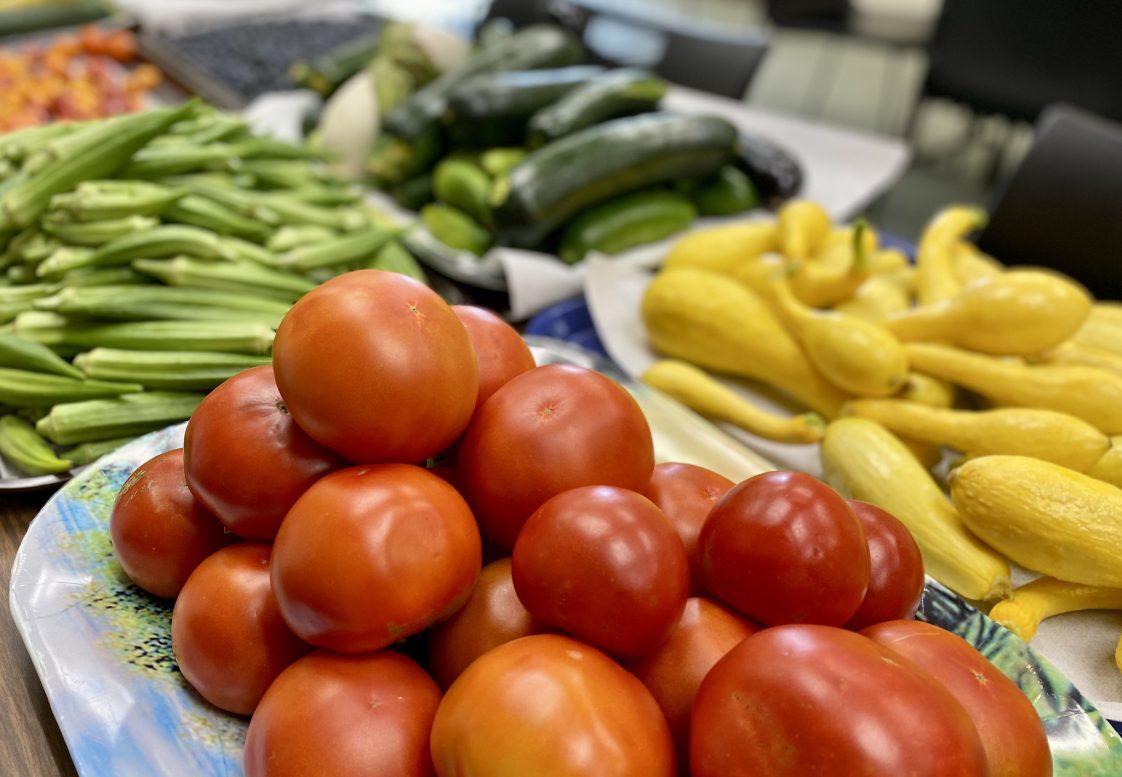Food Safety

AUBURN UNIVERSITY, Ala. – Imagine enjoying the freshness of garden vegetables even in the depths of winter. How is this possible? Gardeners can use the power of their home freezer to lock in summer freshness.
Bridgette Brannon, an Alabama Cooperative Extension System food safety and quality regional agent, said when done correctly, freezing is a great way to ensure quality vegetable freshness for eight to 12 months.
“Freezing is quick, easy and it retains foods’ natural color, flavor, texture and nutritive value better than other methods of preservation,” Brannon said.
Freezing versus Canning
Canning is a popular method used to preserve foods. However, that process can be quite time consuming. While there are pros and cons to each method, Brannon said freezing is far less time consuming and easier to learn than other methods of preservation.
“When freezing vegetables, the freezer is your equipment, and it does most of the work for you,” Brannon said. “All you must do is wash, blanch, pack the food in freezer containers and freeze.”
For example, if you want to store green beans, you can prepare and freeze dozens of pounds of them in just a few hours. Comparatively, when canning, you can only can 14 pounds of green beans (7 quarts) in the same time frame. Brannon said that doesn’t even include the time it would take to prepare the canning equipment and jars.
“When canning, you also can’t just put the jars in the canner, seal it and then leave it there until you are ready to come back,” Brannon said. “You must stay with it the whole time from start to finish.”
The Fresher the Better
Gardeners can freeze nearly any vegetable. However, there are several that are prime options for freezing. These include corn, green beans, squash, peas, broccoli and greens such as spinach, kale and collards. There are a few vegetables that do not bode well in the freezer including cabbage, celery, cress, cucumbers, endive, lettuce, radishes and potatoes.
“Cucumbers and cabbage would not do well frozen to use as in a raw salad,” Brannon said. “However, they could be frozen as a marinated product like as freezer coleslaw or freezer pickles.”
When picking vegetables to freeze, time is of the essence. In fact, a good rule of thumb is to have the produce picked, prepped and packed in the freezer within two hours of picking them. In general, vegetables are better if they are picked early in the morning, right when the dew is off the vines. When picking vegetables to freeze, remember tender and just-matured ones are best.
Wash, Blanch, Pack and Freeze
The first step to prepping vegetables is a thorough wash. This is the perfect time to look for and remove inferior or overly mature vegetables. After washing, it is time to blanch. Blanching is a cooking method in which the vegetables are quickly cooked with water to stop the enzyme action. If not blanched, this enzyme action can cause loss of flavor, color and texture.
After the vegetables have been properly blanched, they must be shocked in cold ice water to stop the cooking process. Submerge the vegetables into water that is at least 60 degrees Fahrenheit or below to stop the cooking process.
“Right after the vegetables cool, pack the vegetables as meal-size portions in moisture- and vapor-proof freezer containers,” Brannon said. “Be sure to pack the vegetables tightly so you remove as much air as possible.”
To keep track of when the vegetables were stored, label and date the containers before putting them in the freezer. Do not overload the freezer, because this will add to the freezing times.
More Information
For more information, in-depth freezing instructions are available in the Alabama Extension publication Freezing Summer’s Bounty of Vegetables available at www.aces.edu.

